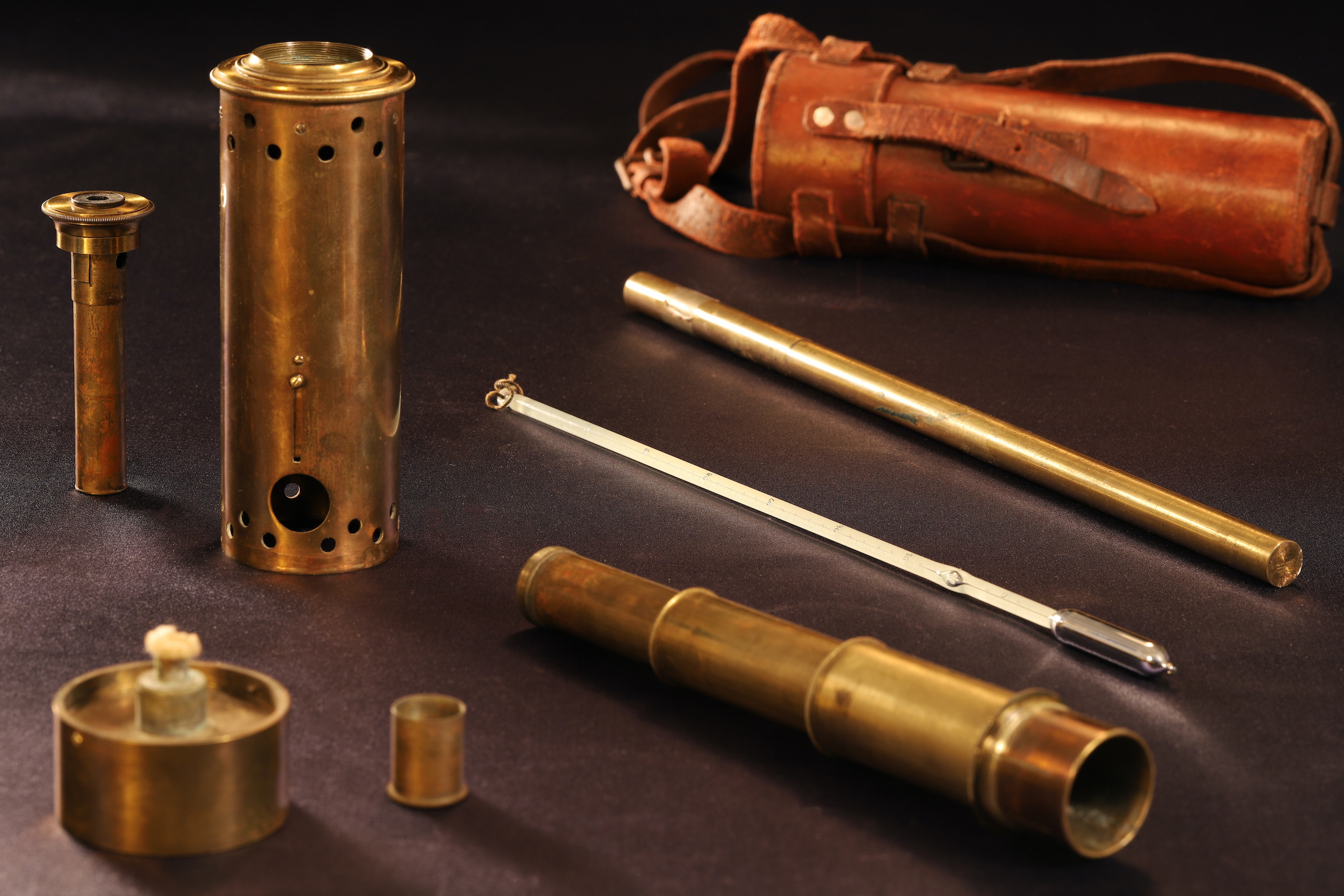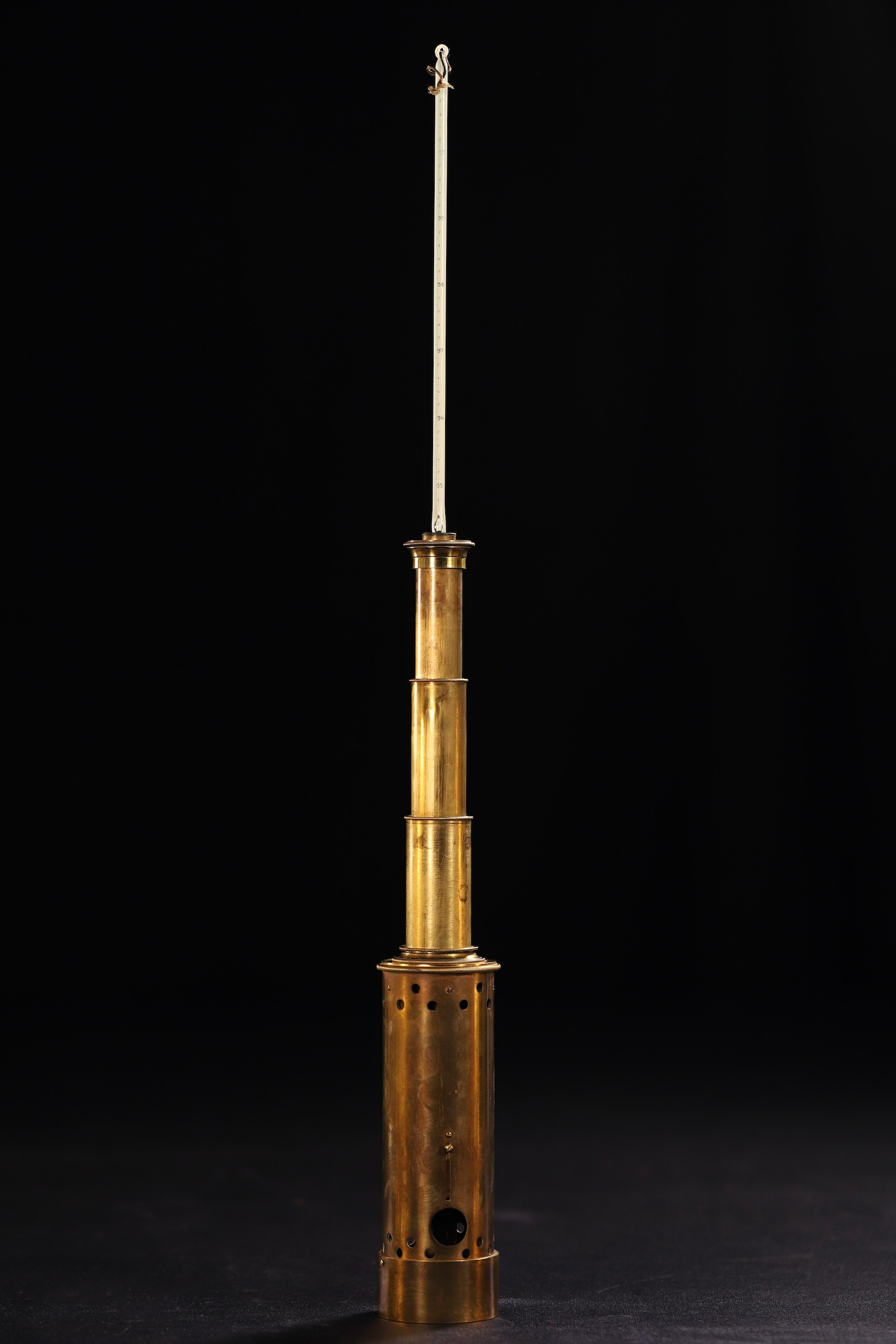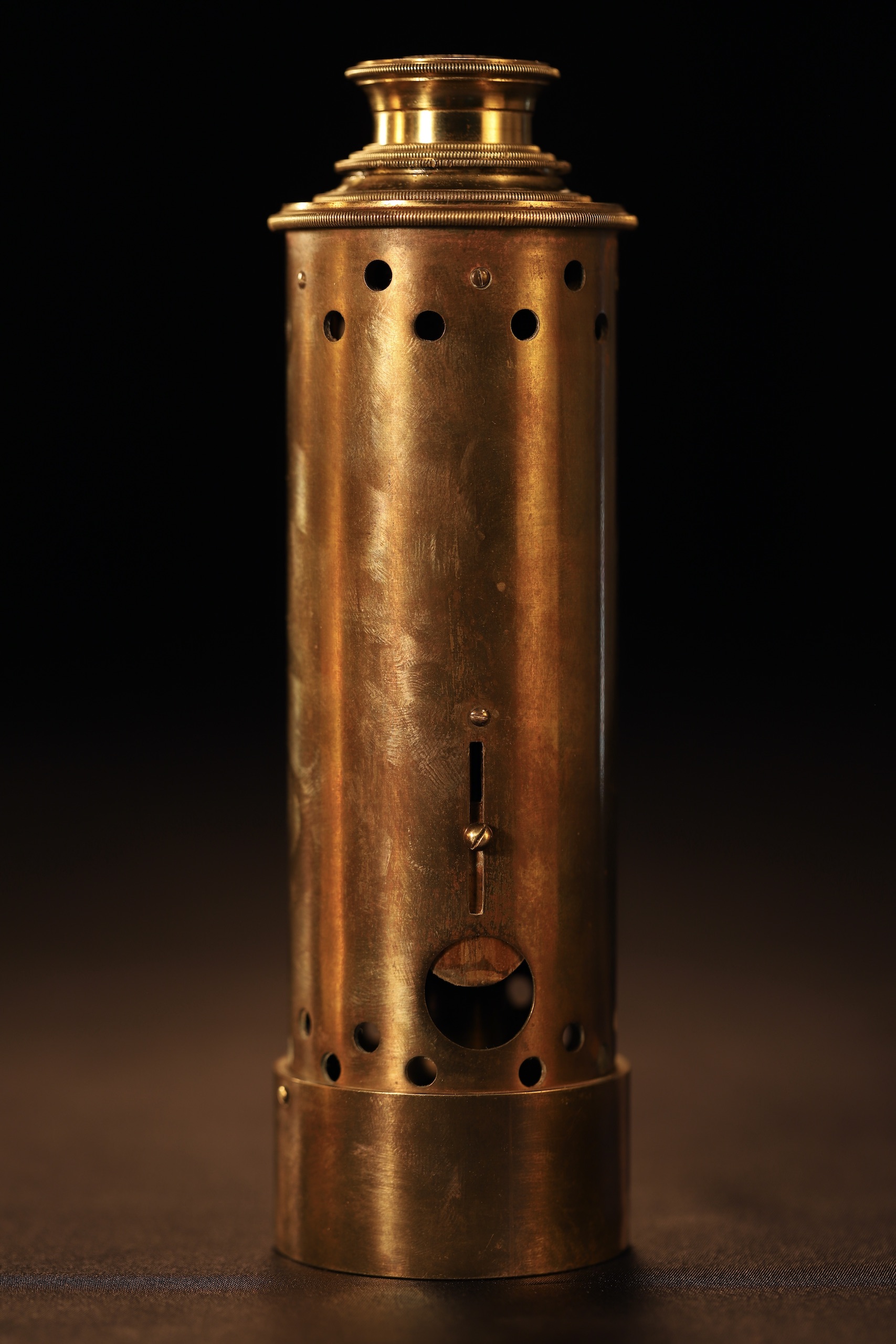The term ‘Hypsometer’ is essentially applied to a device or system, perhaps mathematically based, that enables the determination of heights or elevations. It has been applied to aneroids and various trigonometrically based instruments.
In this instance we are dealing with the instrument more generally recognised as a hypsometer, in essence a device not unlike a telescope however lacking lenses, the object lens replaced with a sturdy vessel into which water is poured and then heated with a spirit burner. The resultant steam passes up the inside of the instrument and around a very finely divided thermometer capable of resolving temperature very accurately.
So how does this give us height, elevation, altitude or barometric pressure? It does so because there is a direct physical relationship between the temperature at which water boils and the surrounding air pressure – essentially, the lower the air pressure the more readily and at lower temperatures water will boil. Now if you could produce a mathematically sound curve or graph to show this pressure, height or elevation could easily be determined.
The principle was first demonstrated by Jean Andre De-Luc in the Swiss Alps during the 1760s, and during the C19th two notable academics made progress: William Barton Rogers, a geologist, utilised the principle whilst studying on the Blue Ridge Mountains in the 1830s, and a professor of Natural Philosophy, James David Forbes, made further experiments in the Swiss Alps.
Around this time, the eminent French physicist Victor Regnault had begun production of a practical portable instrument which he termed “hypsometer,” together with tables which he had worked out. This was a little known and far less understood instrument for its significance and utility, demonstrably important for establishing topographical elevations. It could also be used as an accurate check for the aneroid instrument which emerged slightly later around 1850.
The hypsometer certainly had drawbacks. For one, only distilled water might be used since the tables were calculated for water of highest purity, a known and relatively easily replicated constant. Water as a solute bearing salts or metals or other minerals will have a different boiling point and will therefore corrupt any observations.
In addition, the instrument relied empirically on the generation of steam and observations might only reliably be achieved once the whole apparatus had reached service temperature. This required time and also relative cover from high winds and precipitation. To add to those complications, it comprised one or two very delicate thermometers which could be easily damaged in transit or during use.
So this is not an instrument that might be referred to at any time but it is one that might never go out of arrangement, and for that reason it became vital as a reference on major Alpine and Arctic expeditions. Of course aneroids became increasingly popular for their ease of use and ever ready state for consultation, but the calibration of these instruments was subject to drift not only inherent in their design but also through accident and in transit, thus the hypsometer enabled accurate re-calibration in the field.
This particular instrument is almost certainly French in origin. Though it bears no maker’s marks of any kind, the thermometer was made by Baudin, Paris in 1906, the indicated range calibrated in degrees Celsius. Just above the bulb is an expansion gallery which enables very low values, 2 degrees below and above zero, to be resolved. This in turn enables a very open scale above the gallery covering the working temperatures to be shown on a relatively short instrument, range 94.8° – 101°
Vavasseur Archive – not currently for sale



Antique Pocket Hypsometers Pt II – Hicks Pocket Hypsometer – Vavasseur Antiques
April 22, 2023
[…] For more information about “Hyposometers, see Antique Pocket Hypsometers Pt I. […]